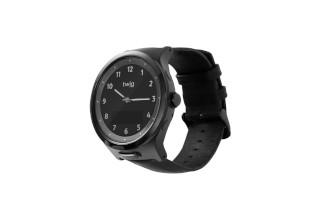Why lone worker risk assessment matters
A well-defined risk assessment helps you determine the level of protection your employees need, based on their specific working environment.
Risk assessment
Understanding of the risks help to assess what type of lone worker devices and systems are needed.
Lowest risk level
At the lowest risk level, a normal smart phone may be sufficient to call for help.
Moderate risk
A safety phone with alarm button, doubling as mobile phone, is often suited for moderate risk scenarios.
High-risk situation
A dedicated lone worker alarm may be required in high-risk situations.
What are social risks?
Social risks occur when lone workers interact with the public and may be exposed to:
-
Verbal abuse
-
Threats or harassment
-
Physical violence
Who is at risk?
-
Social workers
-
Healthcare staff
-
Security guards
-
Retail workers
-
Transport workers
These risks increase during night shifts, isolated tasks, or locations with poor public visibility.
Working alone creates opportunities to take additional risks or to react in unconventional manner during a lone work situation.
Isolated employees are put at greater risk and are more vulnerable to violence when working alone outside normal working hours.
What are environmental risks?
Environmental risks result from the physical work setting and include:
-
Slips, trips, and falls
-
Exposure to extreme weather
-
Loud noise or heavy machinery
-
Falling objects
-
Hazardous chemicals or confined spaces
High-risk industries:
-
Construction
-
Field services
-
Utilities
-
Agriculture
-
Mining and heavy industry
Even low-hazard tasks become dangerous when performed alone without immediate help.
The lone working employees are not automatically exposed to environmental risks and hazards than other employees but the fact of being in a risk situation alone increases the vulnerability. Moreover, this vulnerability will depend on the type of situation in which the lone work is being carried out.
How to select the best device based on lone worker risk level?

Smartphone for low risks
Smartphone may be sufficient when lone work requires minimal contact with people and safe environment (e.g., remote office work).

Wristwatch for moderate risks
Safety phone with SOS button is needed in occasional social or physical risks (e.g., delivery drivers, home visits).

Dedicated device for high risks
Dedicated lone worker alarm device is required when lone worker is regularly exposed to aggressive individuals or dangerous environments.
TWIG lone worker safety devices are designed for moderate and high lone worker risks
Dedicated panic buttons
Quickly trigger an emergency alert with a single press.
Fall and motion detection
Automatically detects falls and lack of movement.
Automatic alerts
Sends alerts to predefined contacts based on specific use cases.
Two-way audio communication
Enables calls between the lone worker and the control center.
Indoor and outdoor positioning
Supports GPS, GNSS, Wi-Fi, BLE and SRD depending on the device model.
Integrates with alarm monitoring centers
Compatible with TWIG MPTP protocol and integrator tools for developers.
Meet your duty of care with TWIG lone worker safety devices.
Whether your employees face verbal threats, hazardous environments, or remote fieldwork, the TWIG lone worker solution ensures you meet your duty of care and protect your workforce.